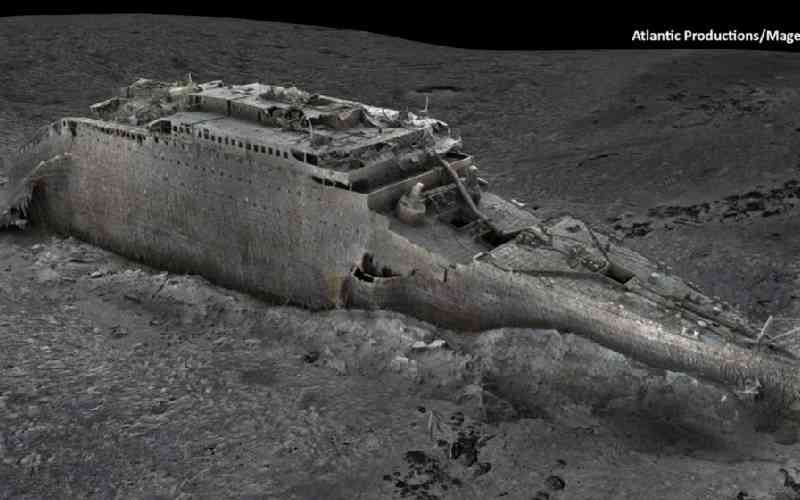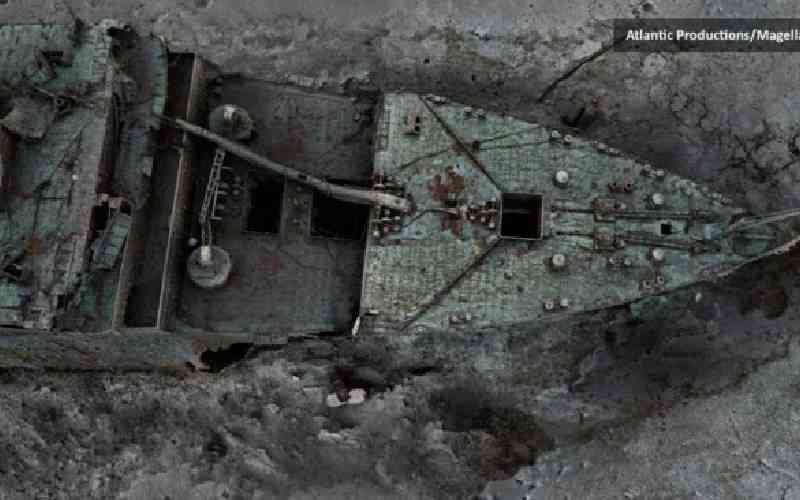
Shipwreck enthusiasts have cause for celebration because the Titanic ocean liner's infamous wreck can now be visualized like never before.
Deep-sea researchers have completed the first full-size digital scan of the Titanic, showing the entire wreck in clarity and detail. Researchers say it is the "largest underwater scanning project in history."
Unveiled on Wednesday, the 3D scan was the result of a six-week expedition to the North Atlantic wreck site in summer 2022, during which researchers used two remotely operated submersibles - named Romeo and Juliet - to map the entire shipwreck and the surrounding 3-mile debris field.

The researchers took more than 700,000 images from every angle to create a virtual, exact 3D reconstruction.
"It's an absolutely one-to-one digital copy, a 'twin,' of the Titanic in every detail," Anthony Geffen, head of documentary maker Atlantic Productions, told The Associated Press. Atlantic Productions is making a documentary about the project.
The scan, which enables the ship to be seen as if the water has been drained away, may also reveal more details about the ship's ill-fated trip across the Atlantic in 1912.
An estimated 1,500 people died when the Titanic sank on April 15, 1912, after hitting an iceberg on its maiden voyage from England to New York.
Richard Parkinson, founder of the deep-sea exploration firm Magellan, believes that the data amount to 10 times more than any underwater 3D model ever tried before.
Magellan carried out the scan project in partnership with Atlantic Productions.
"The depth of it, almost 4,000 meters, represents a challenge, and you have currents at the site, too - and we're not allowed to touch anything so as not to damage the wreck," Magellan's Gerhard Seiffert, who led the planning for the expedition, told the BBC.
"And the other challenge is that you have to map every square centimeter - even uninteresting parts. Like on the debris field, you have to map mud, but you need this to fill in between all these interesting objects," Seiffert said.

After the expedition in the North Atlantic, researchers spent seven months rendering the large amount of data they collected. A documentary about the project is set to come out next year.
Geffen said he hopes the scan will help researchers better understand what happened to the Titanic.
"All our assumptions about how it sank, and a lot of the details of the Titanic, come from speculation, because there is no model that you can reconstruct or work exact distances," he told The Associated Press. "I'm excited because this quality of the scan will allow people in the future to walk through the Titanic themselves."
 The Standard Group Plc is a multi-media organization with investments in media
platforms spanning newspaper print
operations, television, radio broadcasting, digital and online services. The
Standard Group is recognized as a
leading multi-media house in Kenya with a key influence in matters of national and
international interest.
The Standard Group Plc is a multi-media organization with investments in media
platforms spanning newspaper print
operations, television, radio broadcasting, digital and online services. The
Standard Group is recognized as a
leading multi-media house in Kenya with a key influence in matters of national and
international interest.



